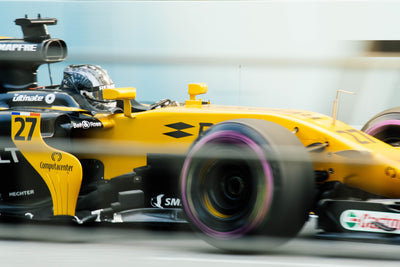Domestic US orders.

The Science Behind Fireproof Racing Suit: How it Keeps You Safe
In the high-octane world of motorsports, safety is paramount, and one of the most critical pieces of safety gear for drivers is the fireproof racing suit. Designed to protect drivers from extreme heat and flames in the event of a fire, these suits are the result of advanced materials and cutting-edge engineering. But how exactly do fireproof racing suits work, and what makes them so effective? Let’s dive into the science behind these life-saving suits and why they are essential for any racer.
The Materials: What Makes a Fireproof Racing Suit?
At the core of every fireproof racing suit is its fabric. These suits are made from a blend of materials specifically designed to resist ignition and prevent the spread of flames. One of the most common materials used in fireproof racing suits is Nomex, a flame-resistant synthetic fiber developed by DuPont.
Nomex is highly effective because of its unique chemical structure. When exposed to intense heat, Nomex fibers do not melt or drip; instead, they char and create a protective barrier between the driver and the heat source. This charring effect slows down the transfer of heat, giving drivers precious extra seconds to escape dangerous situations. Another material often used in fireproof racing suits is Kevlar, which is known for its heat-resistant properties and strength, providing an additional layer of protection.

Multi-Layered Design: Building Layers of Safety
While the materials themselves are important, the structure and design of the fireproof racing suit play a crucial role in safety. Racing suits are typically multi-layered, with each layer serving a specific purpose. The outer layer is designed to withstand direct contact with flames, while the inner layers provide insulation, helping to regulate body temperature and reduce heat transfer to the skin.
The thickness and number of layers vary depending on the level of protection required. For example, in professional racing leagues, regulations dictate the use of suits with multiple layers for maximum protection. Each layer works in harmony to trap air, which acts as a thermal barrier, further enhancing the suit's heat-resistant properties. The more layers a suit has, the better it can protect the driver from the intense heat generated by a fire.
The Role of Insulation and Airflow
Fireproof racing suits are not just about flame resistance; they are also designed to keep the driver as comfortable as possible during high-intensity races. Insulation plays a major role in this, helping to regulate body temperature by trapping air between the layers of fabric. This airflow allows heat to dissipate more efficiently, preventing drivers from overheating while still providing protection in case of fire.
Additionally, many fireproof suits are designed with breathable panels or ventilation zones to allow air circulation. This reduces the chances of drivers becoming too hot during a race, which can impact both performance and safety.
Stay Safe with Fast Racer
Understanding the science behind fireproof racing suits emphasizes just how important it is to choose the right gear. From flame-resistant materials like Nomex to multi-layered designs that offer superior protection, fireproof racing suits are designed to keep you safe during the most intense moments on the track. For racers of all levels, investing in high-quality fireproof gear is not just a matter of comfort; it’s a matter of safety.
Explore Fast Racer’s collection of fireproof racing suits today and ensure you're fully protected the next time you hit the track. With our wide selection of sizes and styles, you can find the perfect suit that combines safety, comfort, and performance. Don’t take risks—gear up with the best.



Leave a comment